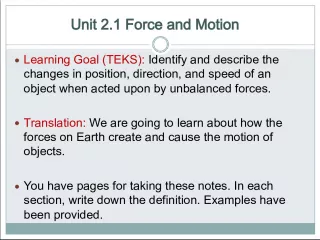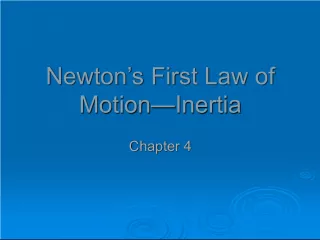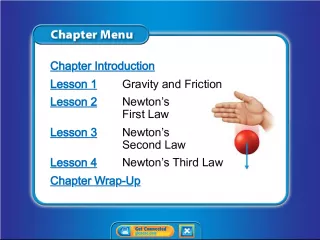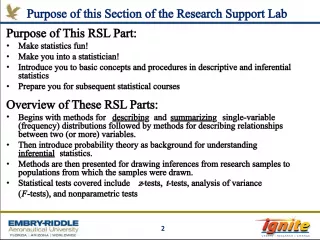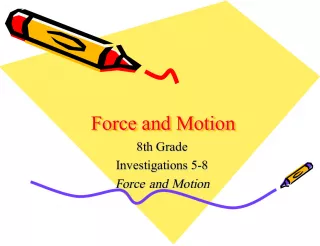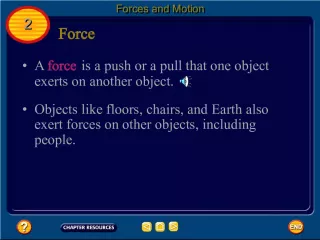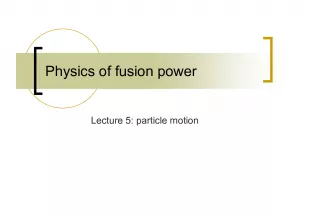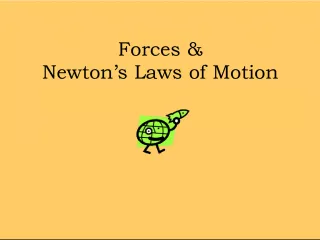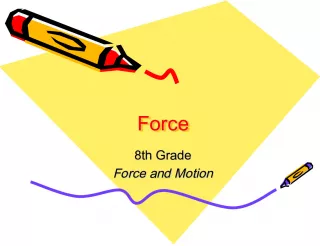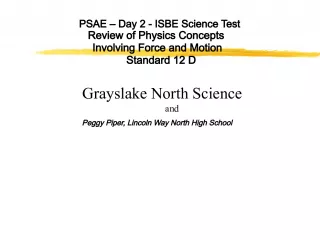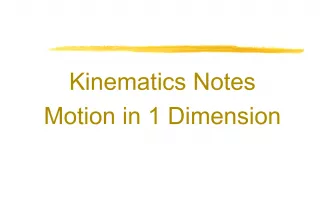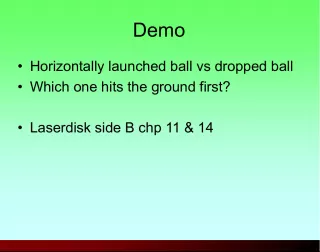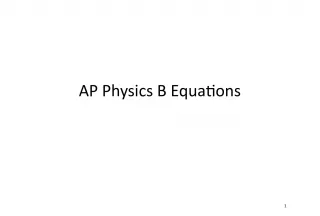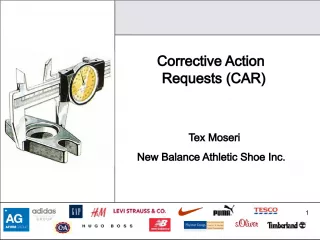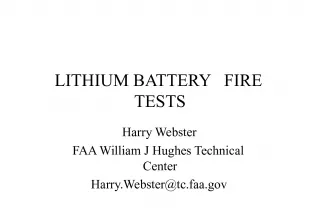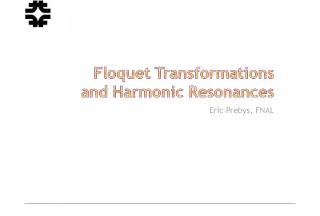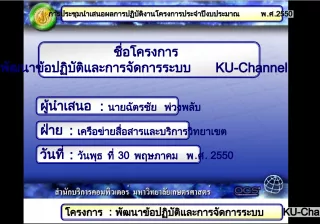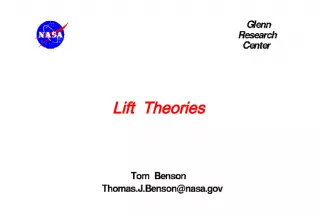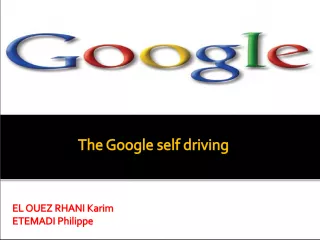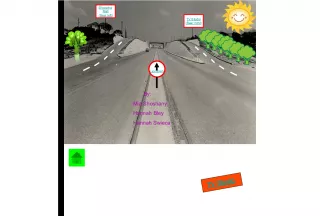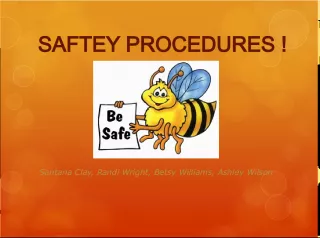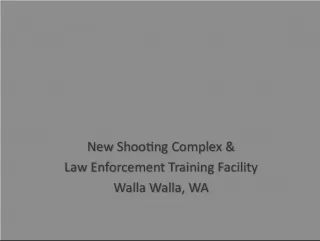Describing Motion with Battery Operated Toy Cars
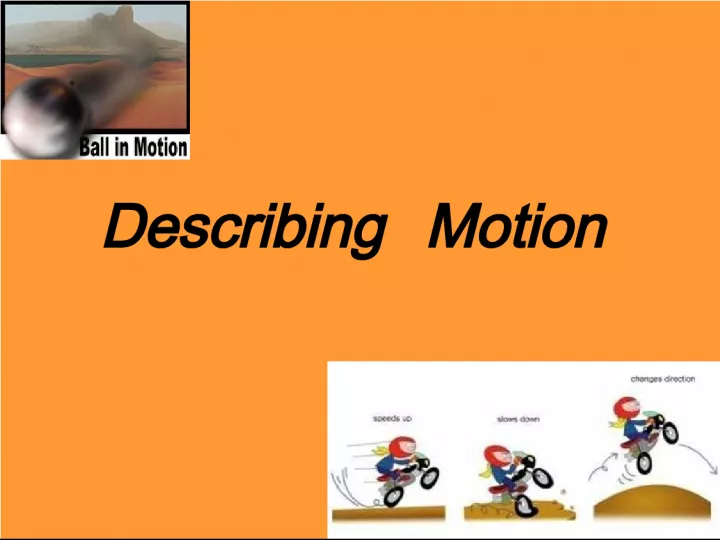

In this activity, you will work in a group of four at your table and play with battery operated toy cars. You can use any additional materials you might need such as a meter
- Uploaded on | 7 Views
-
 stanislaw7
stanislaw7
About Describing Motion with Battery Operated Toy Cars
PowerPoint presentation about 'Describing Motion with Battery Operated Toy Cars'. This presentation describes the topic on In this activity, you will work in a group of four at your table and play with battery operated toy cars. You can use any additional materials you might need such as a meter. The key topics included in this slideshow are . Download this presentation absolutely free.
Presentation Transcript
Slide1Describing Motion
Slide2Motion Starter #2 • Work as a group of 4 at your table and “ play ” with the battery operated toy cars. Use any additional materials you might need – meter stick, tape, timer, wood blocks etc. PLEASE USE THEM ON THE FLOOR NOT ON THE TABLES! • Describe the motion of these toys. Write your description on a sticky note and put it on the board when finished .
Slide3Motion Starter • What words did you use to describe the motion? Share the sticky notes.
Slide4Describing Motion • Describe the motion of these wind-up toys. – How far does it move? – How fast does it move? – Does it move at a steady rate, speed up, or slow down ?. – What direction does it move? • These all describe MOTION .
Slide5Measuring Motion • As a table group come up with definitions for OR drawings to show Distance vs. Displacement • Be sure to clearly show the difference between the two! • Write your definitions/draw pictures on 2 different sticky notes and put them on the board.
Slide6Measuring Motion DISTANCE DISPLACEMENT
Slide7Measuring Motion • Distance – total change in position • Displacement – change in position IN A STRAIGHT LINE (from point A to point B)
Slide8AB
Slide9Motion song
Slide10What is MotionVideo
Slide11Is your desk in motion?
Slide12TRY THIS! Is your desk in motion? • We need a reference point … Define Reference Point: nonmoving point from which motion is measured
Slide13TRY THIS! Is your desk in motion? • From the reference point of your seat is you desk in motion?
Slide14TRY THIS! Is your desk in motion? • From the reference point of your seat is you desk in motion? NO!
Slide15TRY THIS! Is your desk in motion? • From the reference point of space , is your desk in motion?
Slide16TRY THIS! Is your desk in motion? • From the reference point of space , is your desk in motion? YES!
Slide17Reference Point• Define Motion: Reference point Motion
Slide18Reference Point• Define Motion A change in position in relation to a reference point . Reference point Motion
Slide19Frame of ReferenceVIDEO 2 1) DESCRIBE THE MOTION OF THE BALL FROM THE POINT OF VIEW OF THE AUDIENCE. 2) DESCRIBE THE MOTION OF THE BALL FROM THE POINT OF VIEW OF THE CART FROM WHICH IT IS SHOT.
Slide20Frame ofReference VIDEO 1 11
Slide21Frame ofReference VIDEO 3 11
Slide22Frame of ReferenceVIDEO 4 11 1) DESRCRIBE THE MOTION OF THE ORANGE FROM THE POINT OF VIEW OF A PERSON STANDING ON THE TRAIN 1) DESCRIBE THE MOTION OF THE ORANGE FROM THE POINT OF VIEW OF SOMEONE WATCHING THE TRAIN PASS BY THEM ON THE STREET.
Slide23MEASURING DISTANCE &DISPLACEMENTS 1. Read pages 329-330 to learn about: a. Measuring distance b. Measuring displacements c. Combining displacements 2. Answer the Exit Ticket Questions when you are ready.
Slide24DESCRIBING MOTION EXIT TICKET1. What is a frame of reference and how is it used to measure motion? 2. How are distance and displacement similar and different? 3. How are displacements combined? 4. A girl who is watching a plane fly tells her friend that the plane isn ’ t moving at all. Describe a frame of reference in which the girl ’ s description would be true. 5. Would your directions to a friend traveling from one city to another include displacements or distances? Explain.
Slide25DESCRIBING MOTION EXIT TICKETANSWERS 1. Frame of reference is a set of objects that are not moving with respect to one another. Motion can only be describe in comparison to a frame of reference. 2. Distance is the length of an object ’ s actual path from a starting point to an ending point. Displacement is the length of a straight line from the starting point to the ending point. 3. Displacements are combined using vector addition.
Slide26DESCRIBING MOTION EXIT TICKETANSWERS 4. If the plane is far away and flying directly toward or away form the girl, the plane would appear not to be moving. Also, the plane would not be moving int eh frame of reference of the people on the plane.
Slide27Quick Lab• Do the Lab on page 330 in your textbook • Use the graph paper on the other side of your Motion Exit Ticket. • Exchange your paper with a partner when you ’ re finished. • Determine the distance and displacement of their path • ASSESS: Draw a shape with a distance of 10 and a displacement of 0
Slide28Speed starterComplete the “ Skate Park ” challenge
Slide29Speed• Speed – the rate at which an object changes its position • What is your speed if you cover 240 miles in 4 hours? • Never Fear! Equation person is here!
Slide30•S = d/t • What is your speed if you cover 240 miles in 4 hours?
Slide31•S = d/t • What is your speed if you cover 240 miles in 4 hours? • S = 240/4 = 60 mi/hr!! s d t
Slide32Units in Your Answer• Example units – TIME: Seconds, Minutes, Hours – DISTANCE: Miles, Feet, Meters – SPEED: Miles/Hour, Feet/Second, Meters/second • Units are CLUES!
Slide33Try This!What is the speed of a car moving 124 miles in 2 hours? (SHOW EQUATION, correct answers, and units!) • 124 miles = DISTANCE • 2 hours = TIME • Solve for SPEED!
Slide34ANSWER• S = d/t • 124/2 = 62 mi/hr (mph) s d t
Slide35MEASURING SPEED• Measure distance in meters, miles, kilometers • Measure time in seconds, hours, • Measure speed in m/s, mph, m/h, km/h
Slide36Now it’ s time for a LAB!! Take a Walk in the Park!
Slide37Let’ s practice! s d t
Slide38During a trip, you have…• Average speed your average speed over the whole trip • Instantaneous speed your speed at any given instant during the trip
Slide39You travel from Columbus to Cincinnati (220miles) in 4 hours. – What is your speed ? – Did you have this speed throughout the entire trip? – What was your instantaneous speed at a stop sign? • Average speed your average speed over the whole trip • Instantaneous speed your speed at any given instant during the trip
Slide40You travel from Columbus to Cincinnati (220miles) in 4 hours. – What is your speed ? – Did you have this speed throughout the entire trip? NO! It ’ s your AVERAGE speed. – What was your instantaneous speed at a stop sign? • Average speed your average speed over the whole trip • Instantaneous speed your speed at any given instant during the trip
Slide41You travel from Columbus to Cincinnati (220miles) in 4 hours. – What is your speed ? – Did you have this speed throughout the entire trip? NO! It ’ s your AVERAGE speed. – What was your instantaneous speed at a stop sign? 0 m/h • Average speed your average speed over the whole trip • Instantaneous speed your speed at any given instant during the trip
Slide42Back to Equation Person!• S = d/t • What type of speed are you calculating with this equation? Instantaneous or Average ?
Slide43Back to Equation Person!• S = d/t • What type of speed are you calculating with this equation? Instantaneous or Average ?
Slide44What is the car’ s AVERAGE speed?
Slide45 Then let ’ s practice calculating Average Speed Speed Formula Song !
Slide46A storm is 10 km away and ismoving at a speed of 60 km/h. Should you be worried?
Slide47A storm is 10 km away and ismoving at a speed of 60 km/h. Should you be worried? It depends on the storm ’ s direction!
Slide48Velocity• Velocity is speed with a DIRECTION. • Example: 70 mph is a speed (a scalar qty) 70 mph North is a velocity (a vector qty)
Slide49Calculating VelocityAverage Velocity = change in position time V = position = displacement time time This symbol means “ a change in ” Remember: displacement is the total change in position in a straight line from point A to point B
Slide50What is Earth’ s Velocity? • Earth rotates 25,488 miles counterclockwise in 24 hours. – SHOW EQUATION, ANSWER, UNITS! http://www.universetoday.com/26623/ how-fast-does-the-earth-rotate/
Slide51Wait, the Earth has Velocity? • Check out these links: • http://www.scientificamerican.com/articl e/how-fast-is-the-earth-mov/ • http://www.windows2universe.org/kids_ space/vel.html • http://www.universetoday.com/26623/h ow-fast-does-the-earth-rotate/ • https://www.youtube.com/watch?v=r4T s66qcMuc
Slide52ANSWER• V = d/t with direction • 25,488/24 = 1062 mi/hr Counter-clockwise • THAT ’ S FAST!
Slide53Let’ s Finish the “Walk in the Park” lab
Slide54Let’ s practice Speed & Velocity (homework on 9/4)
Slide55Changing Velocity• Sometimes objects CHANGE velocity as they move. Example: Roll car down a ramp. How is its velocity CHANGING? • This is known as ACCELERATION!
Slide56Acceleration Demo
Slide57Acceleration• Acceleration is a change in VELOCITY due to a change in direction or speed. – Speed up – Slow down – Change direction
Slide58Three Examples ofAcceleration
Slide59ACCELERATION IS A RATE OF CHANGE in velocity!! What is the acceleration of the car between 0 seconds and 2 seconds?
Slide60Equation Person Returns!• Your engine shuts off and you slow down from 60 mph to 0 mph in 3 seconds. What is your acceleration? • What are the units of your acceleration? a : acceleration v f : final velocity v i : initial velocity t : time
Slide61ANSWERA = 0 – 60 3 -20 mi/hr/sec a v f - v i t a : acceleration v f : final velocity v i : initial velocity t : time
Slide62NEGATIVE Acceleration??• Positive acceleration – “ speeding up ” • Negative acceleration – “ slowing down ” That makes sense, since we went from 60 0 !!
Slide63A = V f – V i T Vf = 8m/2sec = 4m/s Vi = 0 m/s T = 2 sec
Slide64Let’ s practice! Then, Time for a LAB!! Ticker-Tape Machine Lab Acceleration
